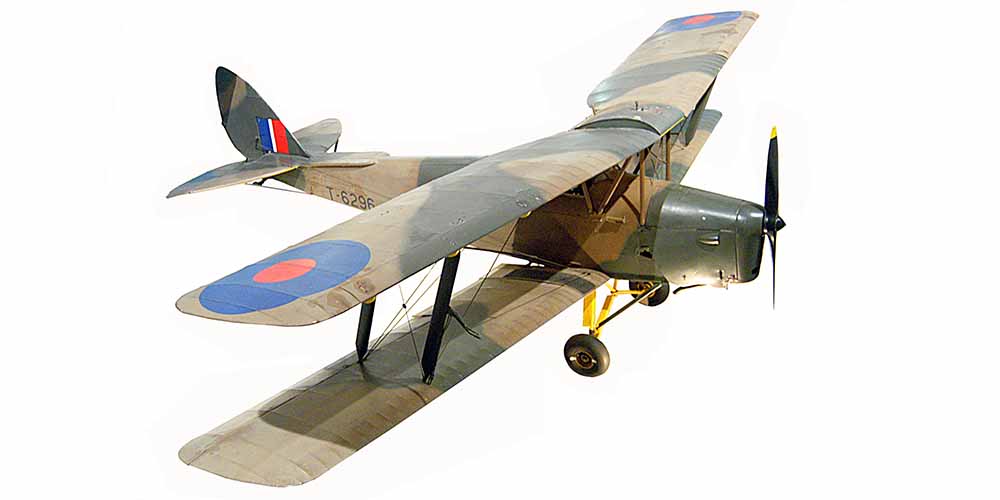de Havilland Tiger Moth II
| Serial No: | T6296 |
| Period: | WWII |
| Reference: | 72/A/455 |
| Museum: | Midlands |
| Location: | War in the Air |
| On Display: | Yes |
The Tiger Moth is arguably the world’s most famous training aircraft. It was originally developed from the earlier Gipsy Moth. The first DH82 Tiger Moth flew for the first time on 26 October 1931 from Stag Lane Aerodrome, not far from Hendon and the current RAF Museum London. A few months later the Tiger Moth entered service at the RAF Central Flying School at RAF Upavon, Wiltshire.
With the pre-war expansion of the RAF there was a great need for training aircraft. This led to a gradual increase in numbers. During the Second World War it provided the majority of RAF pilots with their elementary flying training. Eventually, over 8,800 Tiger Moths were built. Several served with other air forces. A few years after the war it was replaced by the brilliant de Havilland Canada Chipmunk. The DH82 was officially retired from service in 1959 but many still fly in civilian hands.
It’s hard to imagine but the Tiger Moth was once prepared for combat duties. After the Dunkirk evacuation, in 1940, almost any anti-invasion idea was considered. The following are three of many conversions.
In August 1940, 350 Tiger Moths were fitted with light bomb racks. These aircraft were to undertake the bombing of enemy troops attempting a landing. The ‘paraslasher’; a scythe-like blade fitted to a Tiger Moth and intended to cut parachutist’s canopies as they descended to earth. Flight tests proved the idea, but it was not officially adopted. The Tiger Moth ‘human crop sprayer’ used a tank fitted in the front cockpit with powder dispensers located under the wings. The tank would be filled with ‘Paris Green’, an extremely poisonous insecticide. It was intended that low flying aircraft would dust the German troops as they waded ashore.
Fortunately none of these ideas had to be used, leaving Elementary Flying Training Schools to their vital role of pilot training.






